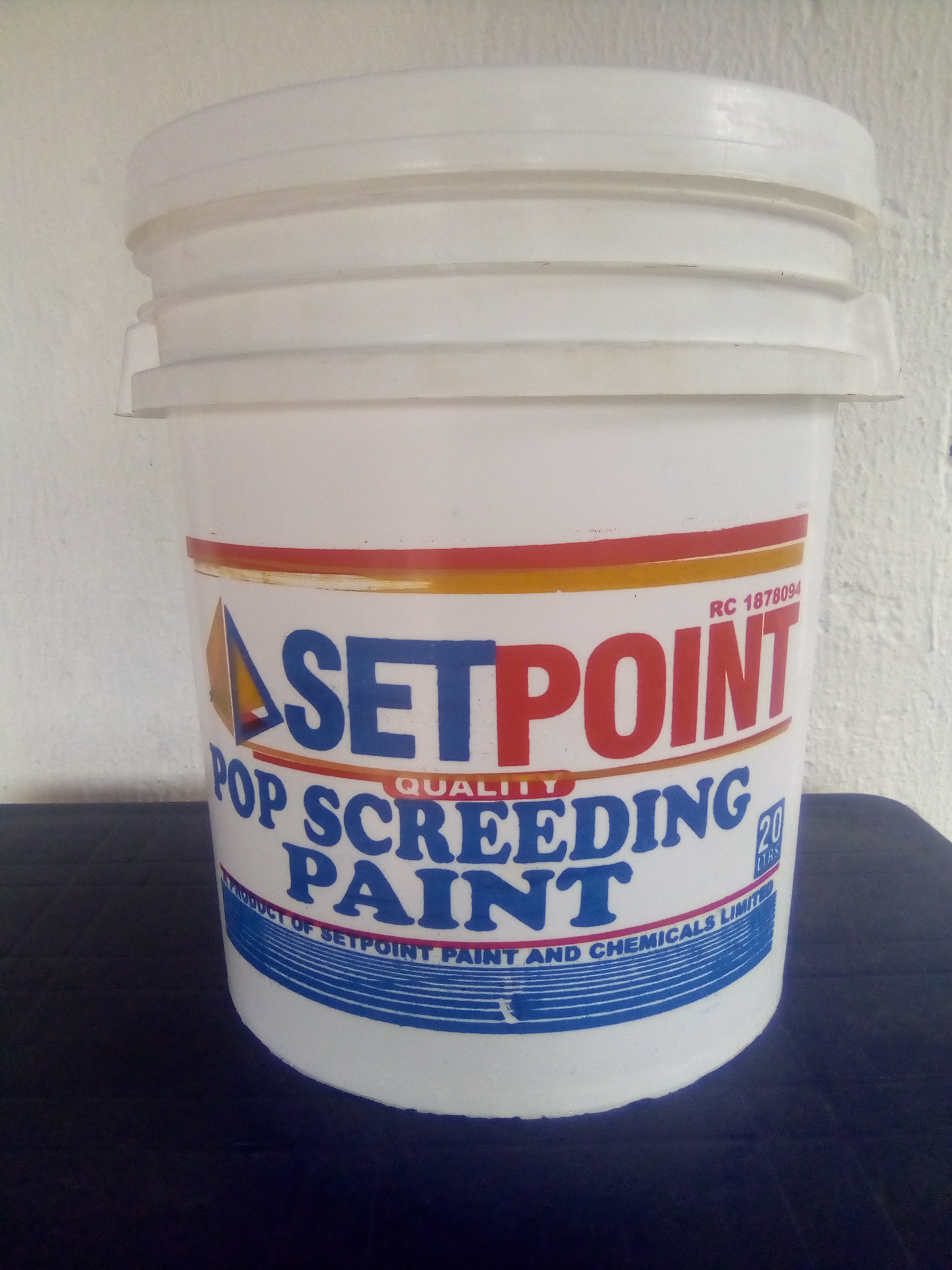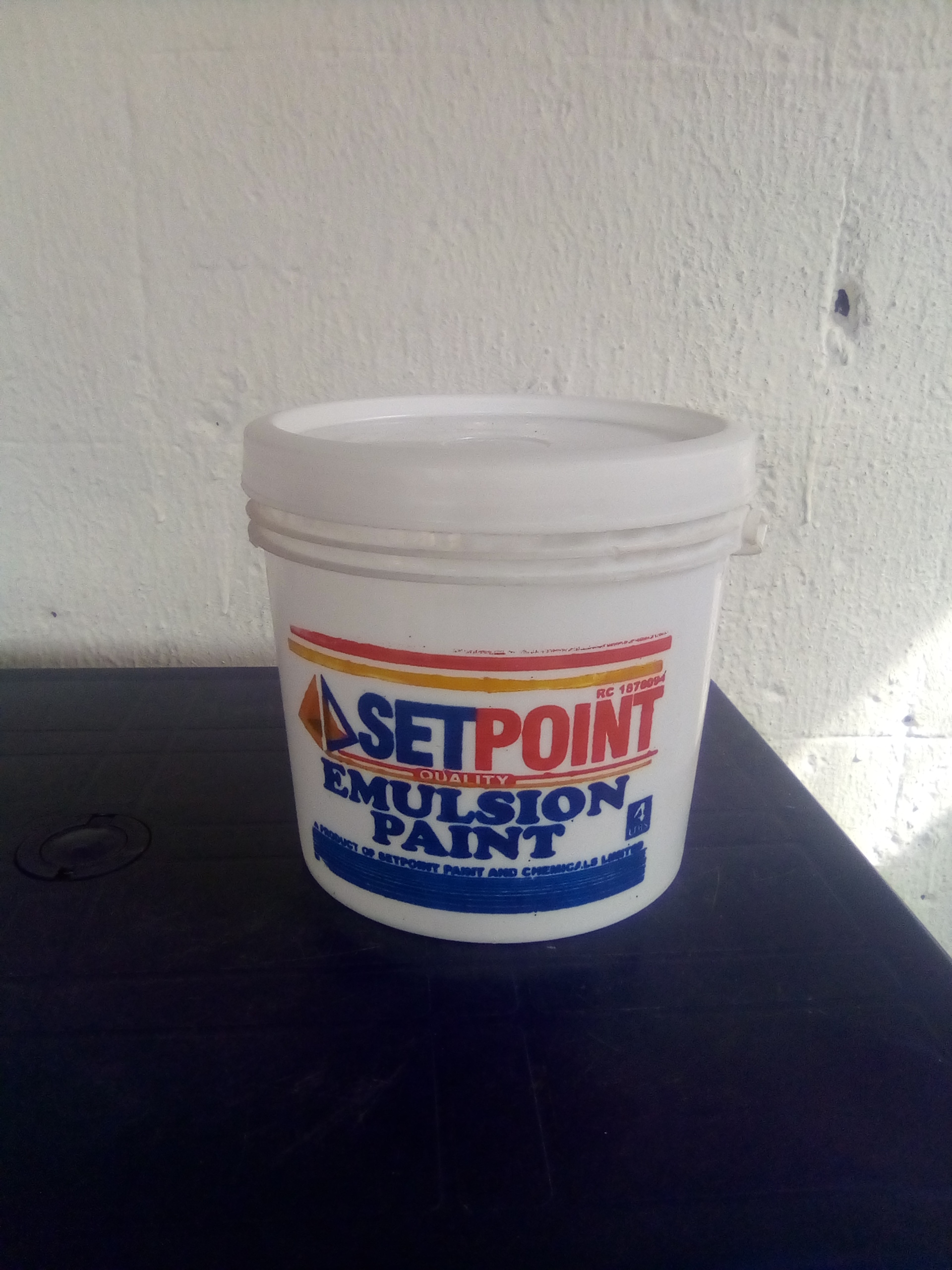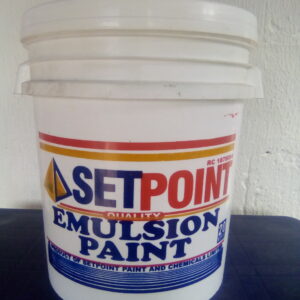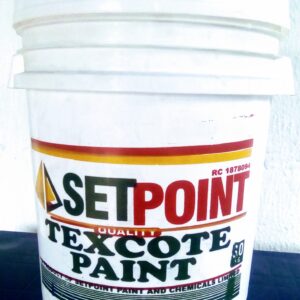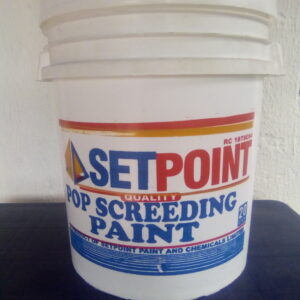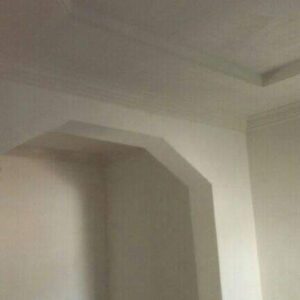Emulsion gallon
Original price was: ₦3,500.00.₦2,500.00Current price is: ₦2,500.00.
Description
Emulsion gallon is our 5 liters gallon of paint which has the same quality with our standard emulsion paints, like the 20 Liters bucket.
In composition of paint specially in surface coating technology, pigments can be conveniently classified into three viz;
- Prime pigment and colorants
- Prime pigment complementary pigments Or Specialty pigment
- Extender Pigments.
2.1.1 PRIME PIGMENTS AND COLOURANTS/composition of paint
The main and most important of prime pigments is Titanium Dioxide, thus I shall dwell a lot on it. However, while lead and Zinc Oxide may also be considered as prime pigments composition of paint.
Colourants are considered as prime pigment in that they can replace the all important titanium dioxide in formulations. In some instances complete replacements like in black paints production is possible. In fact colourants replacement of titanium dioxide is directly proportional to bathochromic shift in shade and hue.
In composition of paint, like in emulsion gallon, generally, almost all black pigments are forms of carton. The commonest red surface and brown pigments contain Iron oxide, while more brightly coloured pigments are compounds of various metals such as Chromium and Cadmium. Metallic Finishes can be achieved by incorporating Aluminum, copper and other metallic powders.
2.1.2 PRIME PIGMENTS COMPLEMENTARY PIGMENTS/composition of paint
OR
SPECIALITY PIGMENTS
Owing to the high cost of titanium dioxide and ever need to be cost conscious in paint production; ways and means of complementing titanium dioxide is ever being sought. Consequently, some pigments have been known and classified as titanium dioxide complementary. It is pertinent to mention that these pigments do not necessarily serve as alternative to titanium dioxide because they only enhance the spacing of titanium dioxide in paints. Thus they can also be called titanium dioxide spacers. Examples of this include ultra carb U-5 (water-based pains titanium dioxide spacer) and Sovrim MC-DP (mainly water-based and partly oil based titanium dioxide spacers) webconsider all this in composition of paint properties.
In most cases and in some other separate cases, the complementary pigments can impart some specially properties to the paint.
The following instances explains:
Ultra-Carb U-5 in addition to the complementary property also have fire retardant properties.
Sovrim MC-DP in addition to the complementary property is also known to impart non-yellowing effects in oil based white paints.
Antimony Oxide and Tetrachlorophthalate Hydroxide are known to on their own when incorporated into water-based plants impart fire resistance to the system.
Nevertheless, a special pigment can be introduced into a formulation for a special attribute. However, all necessary preliminary test and experiments are expected to be carried out before introduction.
2.1.3 EXTENDER PIGMENTS (FILLERS)
These are usually white substance such as calcium…….. widely used extender pigment) Talc and silica, Baryus, Barium, ….. Calcium Sulphate, China clay, Gypsium, Kaolin)
Although these materials impart very little colour or opacity to the paint, they are usually added to cheapen paints, provide bulk improve brushing characteristics and toughness and at the same time reduce gloss. You consider these in composition of paint.
Extender pigments are usually available in particle sizes ranging from 0.01 microns to 44 microns in a variety of shapes including spheroid, needles, fibres and plates.
One important distinction between extender and pigments and prime pigments is their relative indices of refraction.
Those of the extenders are relatively low (about 1.5 to 1.7) while those of the prime pigments are normally 2 and above.
Generally in considering and choosing pigments composition of paint, note must be taken of cracking tendency, e.g. with zinc oxide and silica materials, chalking tendency: e.g with Titanium dioxide; loss of gloss, e.g with excessive use of extenders; deficient light fastness e.g with some lakes and pigment dyestuffs, floating tendency e.g with Prussian blue.
THE CHEMISTRY OF TITANIUM DIOXIDE
Though titanium dioxide occurs naturally in three crystalline forms-anatase (tetragonal), brookie (orthorhombic) and rutile (tetragonal), only the rutile and anatase are of importance in paint production.
Although both belong to the same crystalline system there are characteristic differences in their lattice structure. The components of the crystal lattice, the titanium-oxygen octahedral are bound at four at four edges in the anatase form but only two in the rutile form. The titanium dioxide crystal lattice is usually specifically modified, e.g. with aluminum or zinc to impart some given pigment properties in compositon of paint.
One of the properties affected by the crystalline form is the refractive index;
Anatase 2.5 specific Gravity 3.85
Rutile 2.7 specific Gravity 4.1
It is this characteristic which makes the titanium dioxide, especially the rutile form, so unbeatable as a white pigment.
The crystalline form also governs other properties such as whether stability of pigmented systems. Generally speaking rutiles should be used for outdoor applications. Anatase pigments are best for applications requiring low abrasiveness and for other special applications.
Titanium dioxide is resistant to atmospheric influences as well as to most chemicals. It does not react with acids, other than with hydrofluoric acid and hot concentrated sulphuric acid, nor with alkalis, solvents or salt solutions. It is neutral, has extremely good heat stability and is not known to have any toxic effect.
CHEMICAL IDENTIFICATION OF TITANTUM DIOXIDE
Though the pigment is very difficult to get into solution, it can be dissolved by heating to fuming with concentrated sulphuric acid and little potassium sulphate for half to one hour composition. The solution is then cooled and added carefully to distilled water. The resulting solution is filtered to separate siliceous matter (or barium sulphate in place of potassium sulphate) and the following tests can be applied;
- Addition of hydrogen peroxide gives an orange or orange yellow solution
- Addition of metallic zinc results in reduction of the titanium to the titanous condition shown by the formation of a violet colouration.
In summary, the following factors are to always be borne in mind when choosing and combining pigments in composition of paint formations:
- Colour and Fastness Properties
- Required Cost
- Gloss level
- Durability
- Hiding Power
- Other Desired Properties of the dried film.
2.2. BINDERS (RESINS)
Simplistically, a binder is anything that binds. Technically, binder is the non-volatile portion of the vehicle of a paint; it binds or cements the pigment particles together and the paint film as a whole to the material it is applied like in emulsion gallon.
Resin (binder) can be natural or synthetic. Natural resin is a glassy amorphous organic substance produced either in the metabolism of tree growth, e.g. copel, or by insects, e.g. shellac.
The former may be obtained from growing trees or dug up from the ground (fosil resin) where it has lain since the trees from which it was formed decayed in pre-historic times. These resins, as distinct from gums are not soluble in water but may be dissolved in organic solvents or vegetable oils, if necessary after heat treatment to form varnished. Synthetic resin originally is a number of groups of synthetic substances which resemble and share some of the properties of natural resins, but now used for materials which bear little resemblance to natural resins. In emulsion gallon, The term is generally understood to mean a member of the heterogeneous group of compounds produced from simpler compounds by condensation and or polymerization; chemically modified natural polymers such as cellulose acetate and hardened casein, are not considered to be synthetic resin.
2.2.1 ALKYD RESINS
Alkyd Resins are the most important and most extensively used synthetic resins in the surface coating industry. Generally speaking, alkyd resins can be classified as polyesters because they are produced through multiple etherification reactions.
An ester such as ethyl-acetate is produced by heating together ethyl alcohol and acetic acid, each reactant having a functionality of one.
C2H3OH + CH3COOH – CH3COOC2H5 + H2O
Esters thus formed from simple mono-functional reactants, e.g. ethyl acetate, are chemical individuals of fixed known and easily determined molecular size with definite melting and boiling points; they are non-resinous in composition of paint.
However, if the functionality of the reaction is increased from 1:1 to 2:2 by using dihydric alcohols and dibasic acids a more complicated reaction occurs. In certain simple cases as with ethylene glycol and succinic acid, a cyclic ester is formed which again has low molecular weight and definite molecular size and structure. Not necessarily in emulsion gallon
CH2OH CH2COOH CH2COOC2H2 + 2H2O
CH2OH + CH2COOH – CH2COOCH2
More usually, especially if the reactants are of longer chain length, a half-ester is first obtained, which can then condense by etherification with other similar molecules to give a long chain polyester
